SCOREC has always places significant value on working directly with industry and delivering advanced simulation workflows that address industry needs. Over the years SCOREC has received support from 47 companies through a combination of an industrial partners program, direct contracts and joint SBIR/STTR projects.
As part an initiative to develop deeper industrial collaborations RPI has instituted an Industrial Engagement Program that provides a cost-effective mechanism to engage with RPIs research, execute transfer technology, and develop specialized workforces. This, coupled with RPI's favorable IP policies, provides a strong foundation for technical interactions with industry.
Ongoing Industry Supported Projects
SCOREC is working with IBM to develop multiscale technologies for thermal modeling of 3D and heterogeneously integrated chips. In 3D chip design, structures span nine orders of magnitude making these structures infeasible to solve directly given the computational budget and time constraints of the engineering design loop. We are developing multiscale methods that can be plugged into commercial pipelines and provide insight into where commercial tooling may need improvement. In this project, we have developed a tool that can automatically extract 3D RVE geometry from industry standard design files such as OASIS/GDSII upon which a multiscale homogenization technique, that is orders of magnitude faster than fully resolved simulations, is applied for fast, yet accurate simulations.
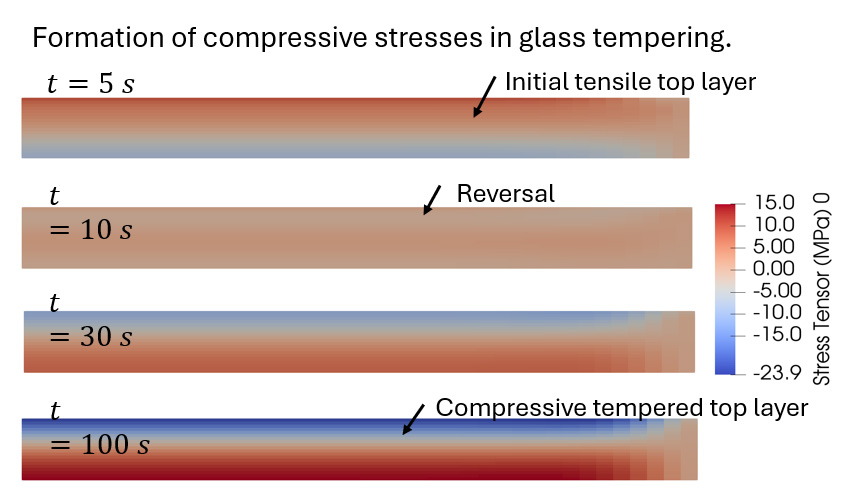
SCOREC researchers are working with Corning Inc. to develop new material models and analysis tools to investigate the glass forming process. As part of this project, we have developed a special purpose thermomechanical finite element code for 2D axisymmetric and 3D glass forming problems that make use of viscoelastic properties. This is further being used to investigate the sensitivity of glass forming process models to uncertainty in material properties.
An ongoing DOE Advanced Scientific Computing Research SBIR project awarded to Simmetrix Inc. and SCOREC is focused on the development of geometry, meshing and field coupling techniques to address the simulation needs of DOE fusion energy computational scientists and commercial fusion energy system companies. Developments being carried out include meshing stellarator geometries, advanced geometric model simplification processes, graphical user interfaces, curved mesh adaptation and code coupling methods.
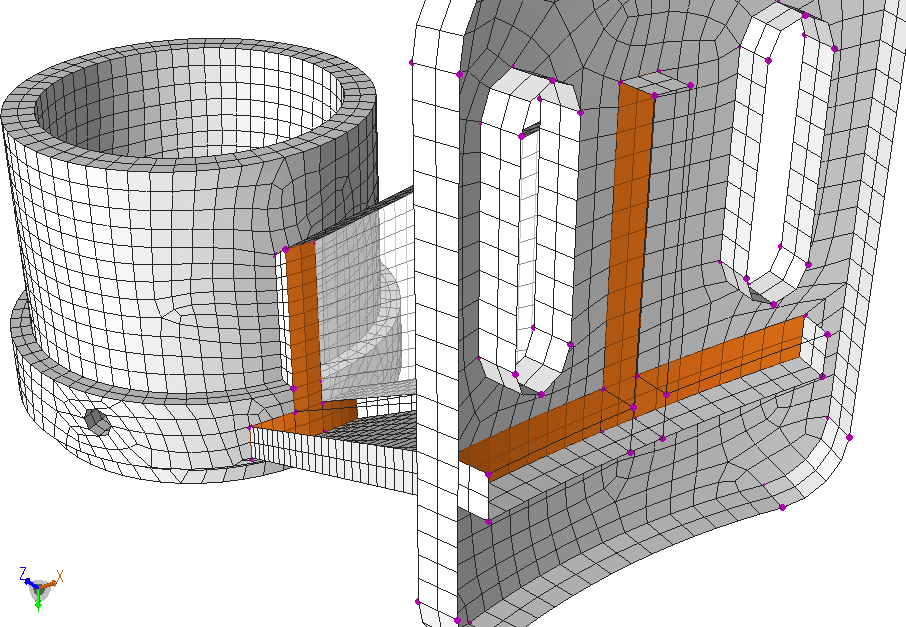
An ongoing NAVY SBIR project awarded to Simmetrix Inc. and SCOREC addresses hexahedral dominate mesh generation. Developments include an AL/ML based method to decompose domains into hexahedral meshable regions, novel lofting and extrusion meshing techniques, transition procedures for hexahedral gradation and mixed mesh transition regions.
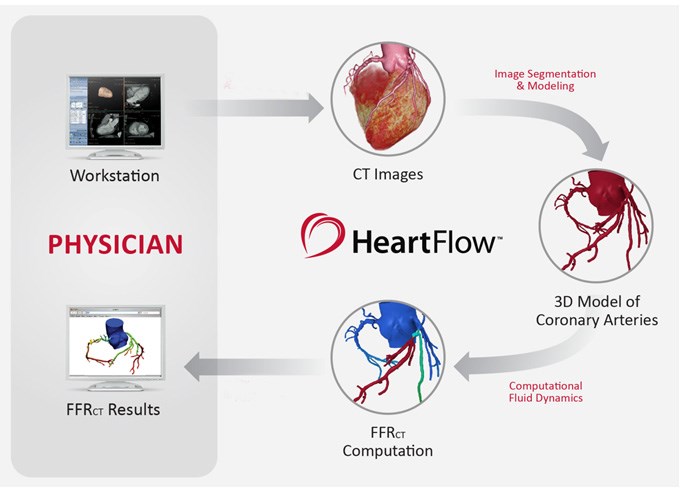
In the cardiovascular flow modeling area, we executed joint research with Stanford University and the University of Texas on methods to model patient specific arterial systems. SCOREC provided mesh generation and CFD capabilities to this research program. The tools SCOREC developed in that research represented the predecessors to the meshing and CFD tools currently being used in the HeartFlow coronary care software for FFRCT patient specific analysis. HeartFlow FFRCT has been used in the treatment of >400,000 patients at >1,400 health care institutions.
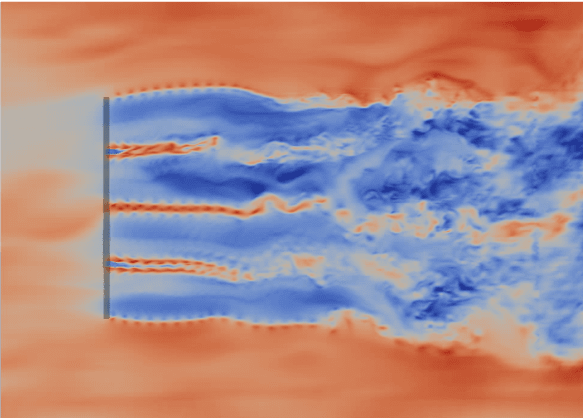
atmospheric boundary layer
In a project funded by NYSERDA, we worked jointly with researchers at the General Electric to study multi-rotor wind turbines. An alternative to traditional upscaling of single-rotor wind turbines for higher power production is the use of multiple rotors mounted on the same tower. We focused on the aerodynamics analysis of multirotor configurations using dynamic large eddy simulations (LES). The data obtained from current high-fidelity LES simulations showed an early onset of wake recovery in the multirotor configuration with a reducing velocity deficit as well as a higher degree of uniformity in the wake as compared to the single-rotor simulation.
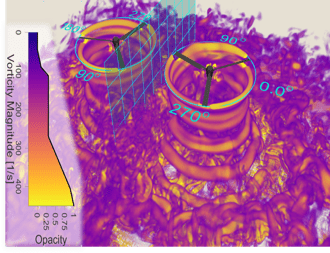
effect in a multi-rotor case
In the area of electric vertical take-off and landing (eVTOL) aircrafts for urban air mobility, we have worked together with Boeing to investigate interactional aerodynamics for side-by-side eVTOL rotors in ground effect. We developed and used massively parallel turbulence-resolving simulations and provided accurate results and new insights related to turbulent rotor-wake interactions and the fountaining of flow vertically up between the rotors leading to strong vibratory loading and a larger thrust loss as compared to a single rotor in ground effect.
In the hypersonic application area, we have worked together with Corvid Technologies and Simmetrix Inc. under a NASA STTR project to develop an in-memory parallel adaptive workflow for complex geometry problems to accurately capture the shocks and boundary layers and surface quantities such as skin friction and surface heating.







